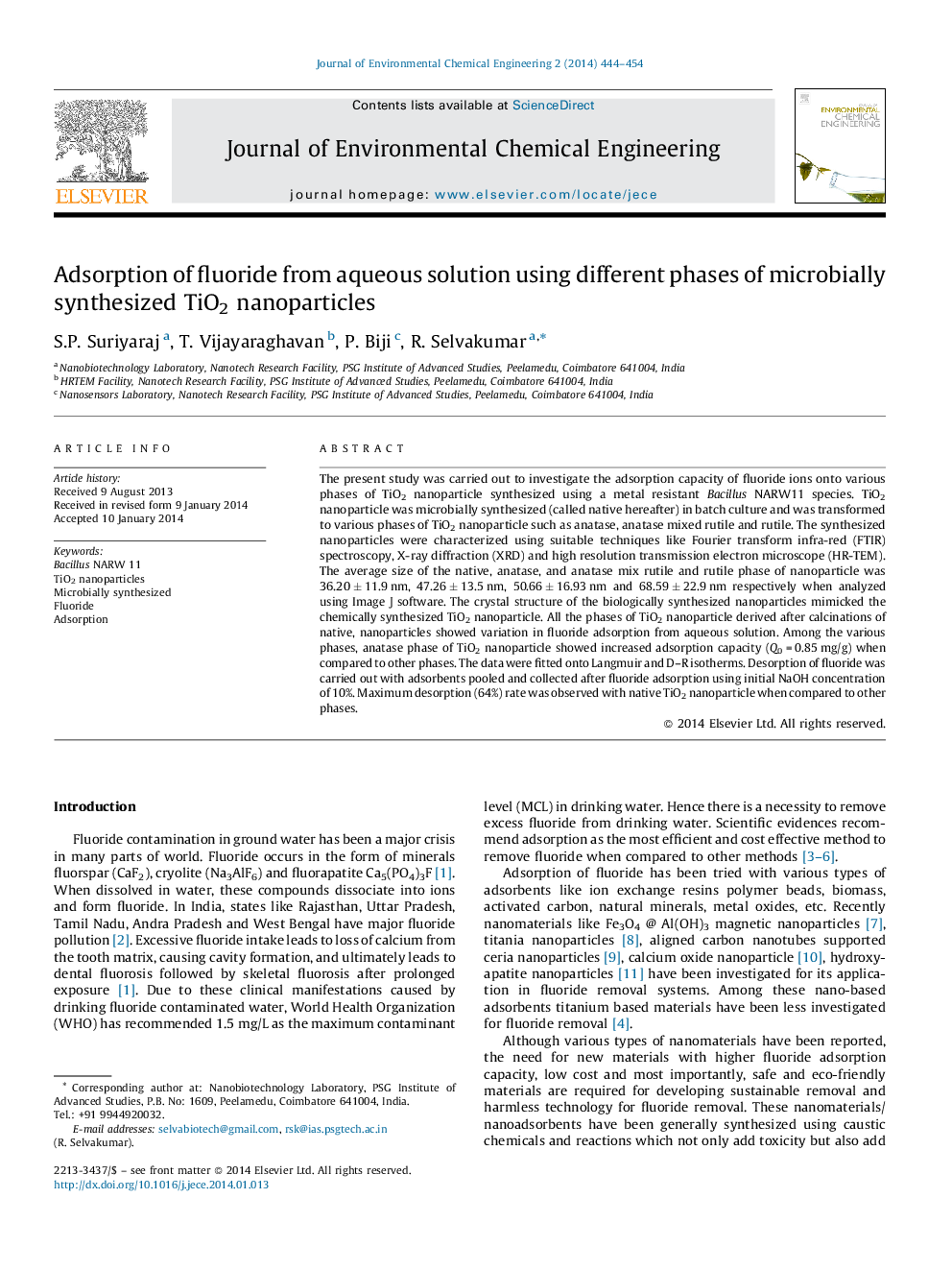| کد مقاله | کد نشریه | سال انتشار | مقاله انگلیسی | نسخه تمام متن |
|---|---|---|---|---|
| 222159 | 464270 | 2014 | 11 صفحه PDF | دانلود رایگان |

• Adsorption of fluoride studies using microbially synthesized TiO2 nanoparticle.
• Impact of different phases of TiO2 nanoparticles on fluoride removal deduced.
• Anatase phase of TiO2 nanoparticles showed maximum fluoride removal.
• Effect of various operating parameters on fluoride removal studies.
The present study was carried out to investigate the adsorption capacity of fluoride ions onto various phases of TiO2 nanoparticle synthesized using a metal resistant Bacillus NARW11 species. TiO2 nanoparticle was microbially synthesized (called native hereafter) in batch culture and was transformed to various phases of TiO2 nanoparticle such as anatase, anatase mixed rutile and rutile. The synthesized nanoparticles were characterized using suitable techniques like Fourier transform infra-red (FTIR) spectroscopy, X-ray diffraction (XRD) and high resolution transmission electron microscope (HR-TEM). The average size of the native, anatase, and anatase mix rutile and rutile phase of nanoparticle was 36.20 ± 11.9 nm, 47.26 ± 13.5 nm, 50.66 ± 16.93 nm and 68.59 ± 22.9 nm respectively when analyzed using Image J software. The crystal structure of the biologically synthesized nanoparticles mimicked the chemically synthesized TiO2 nanoparticle. All the phases of TiO2 nanoparticle derived after calcinations of native, nanoparticles showed variation in fluoride adsorption from aqueous solution. Among the various phases, anatase phase of TiO2 nanoparticle showed increased adsorption capacity (Q0 = 0.85 mg/g) when compared to other phases. The data were fitted onto Langmuir and D–R isotherms. Desorption of fluoride was carried out with adsorbents pooled and collected after fluoride adsorption using initial NaOH concentration of 10%. Maximum desorption (64%) rate was observed with native TiO2 nanoparticle when compared to other phases.
Figure optionsDownload as PowerPoint slide
Journal: Journal of Environmental Chemical Engineering - Volume 2, Issue 1, March 2014, Pages 444–454